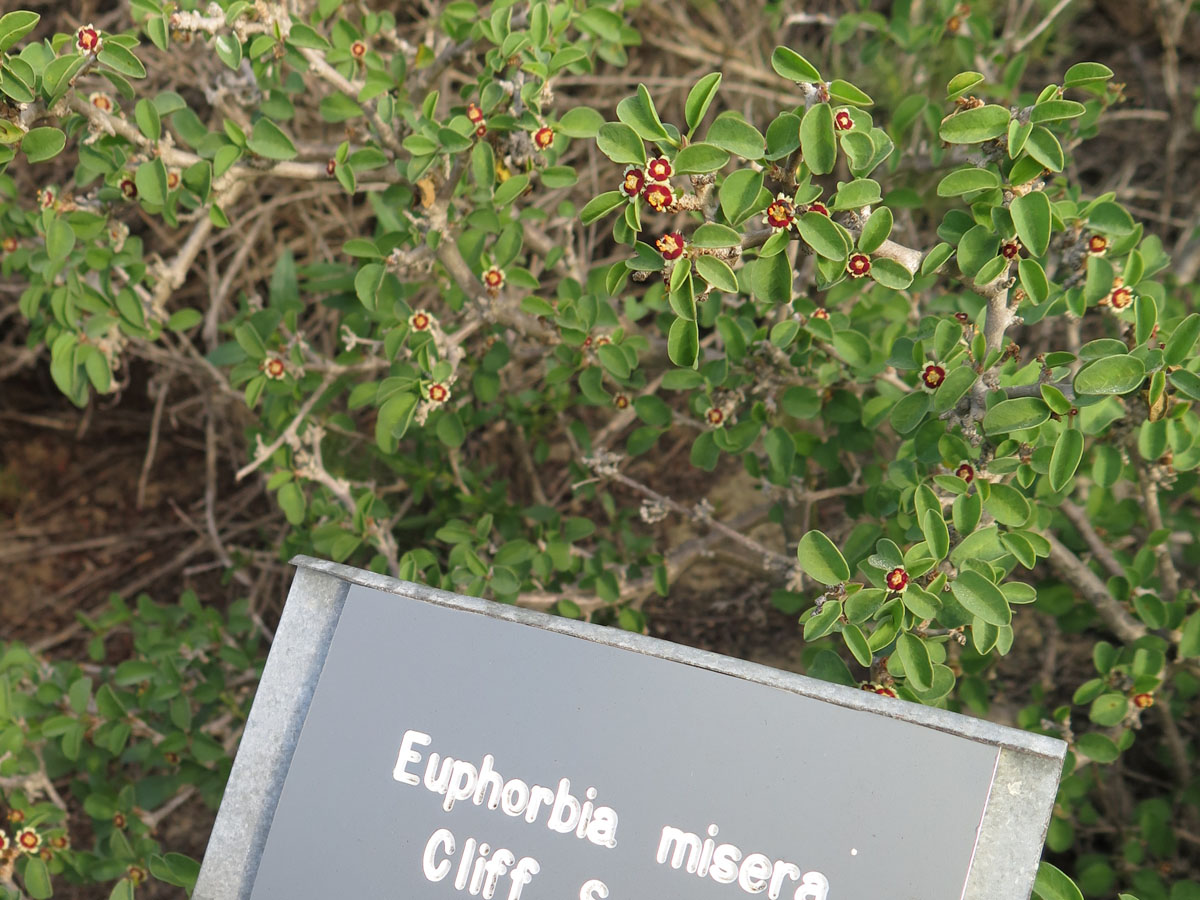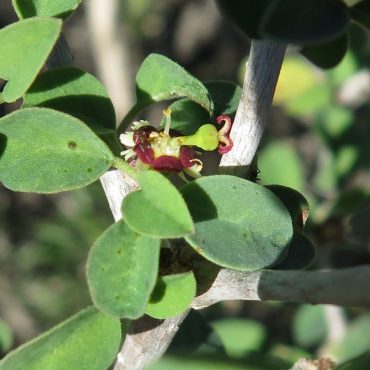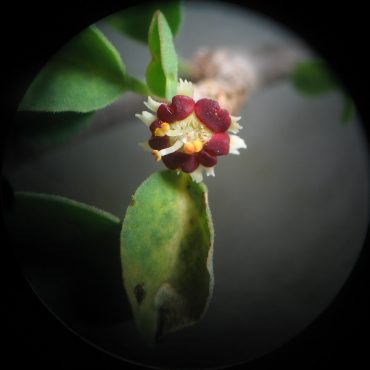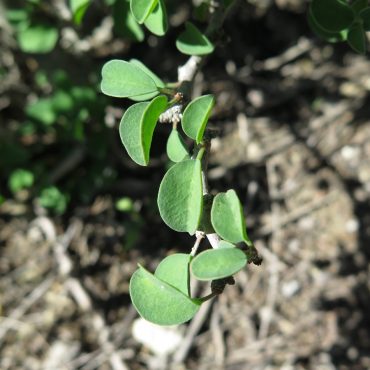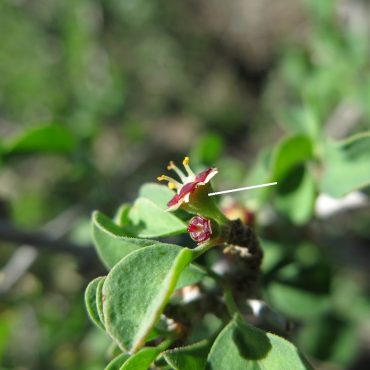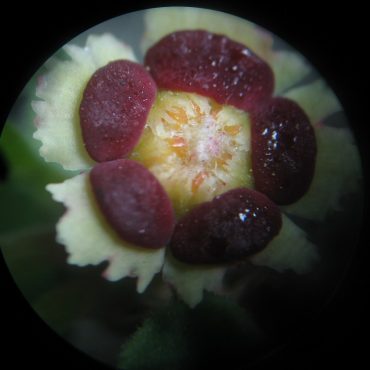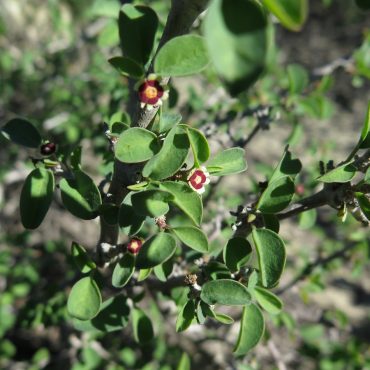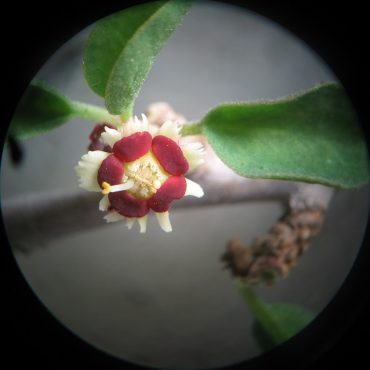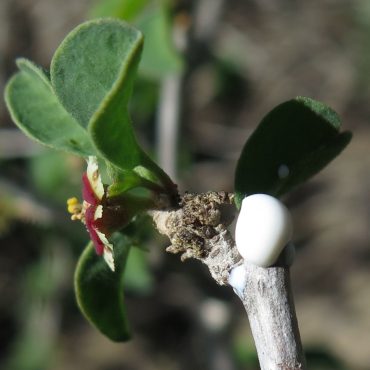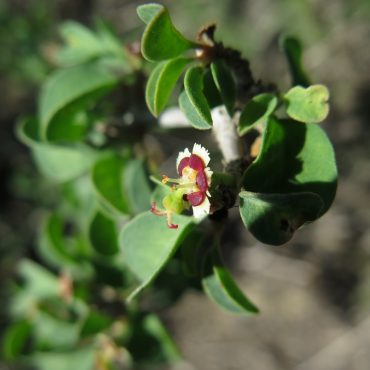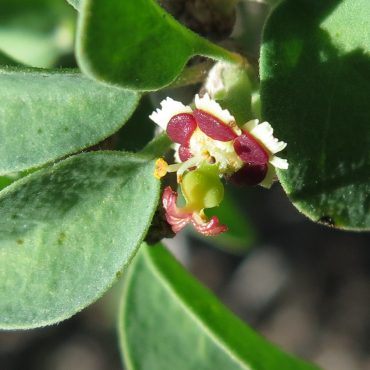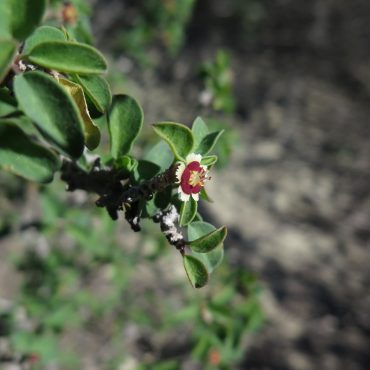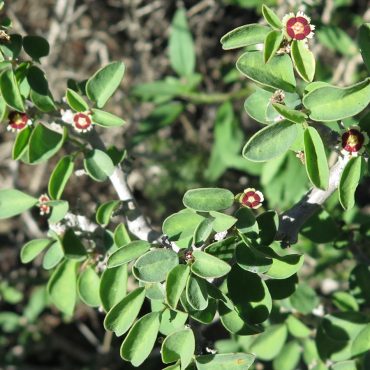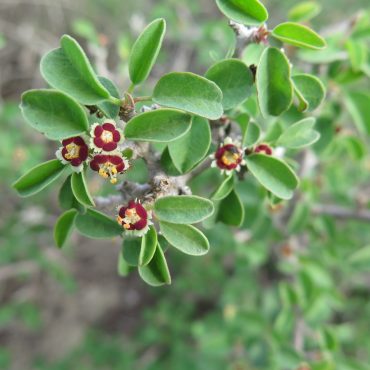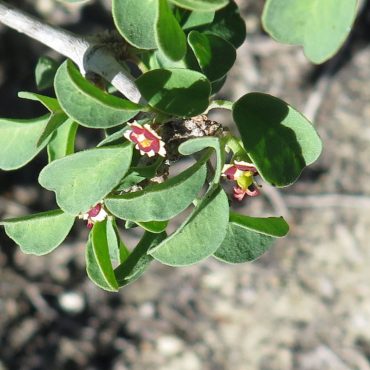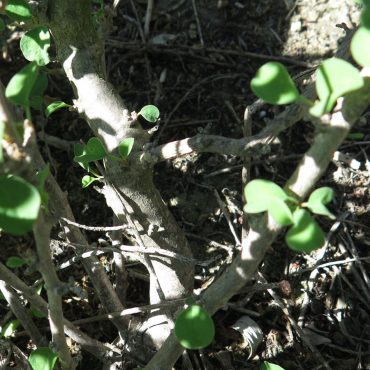Like its cousin the poinsettia, cliff spurge (Euphorbia misera) lacks true petals. Instead, the flowers are tiny and inconspicuous. In poinsettia, small flower clusters are surrounded by colorful leaves, which look like petals. In cliff spurge each tiny cluster is surrounded by small but showy dark red nectar glands, each of which has a pale, fringed wing. The ring of glands gives each flower cluster a perky, happy appearance, making one wonder about the appropriateness of the Latin name misera, or wretched.
Cliff spurge is classified as rare and endangered in California, where it is threatened by development, fire and and by non-native plants. It is somewhat more common in Baja California. Cliff spurge prefers coastal bluffs and rocky slopes, and although San Elijo Ecological Reserve appears to offer plenty of suitable habitat, the only plant we have found in the Reserve is planted northwest of the Nature Center. Many years ago, former Supervising Ranger Susan Welker started this from a cutting taken from a plant in the Tijuana River Valley.

